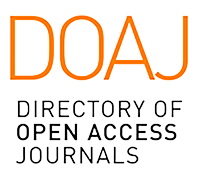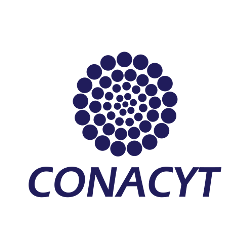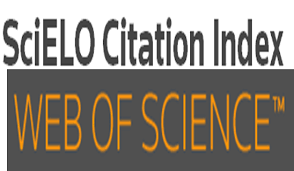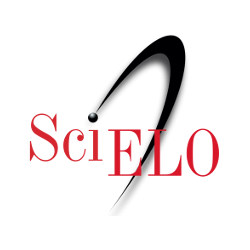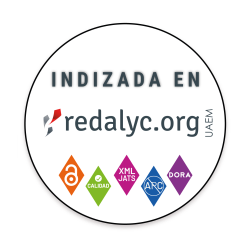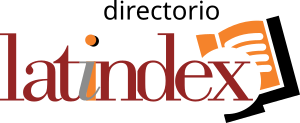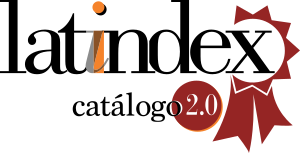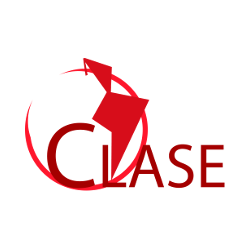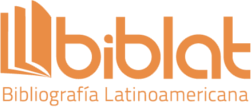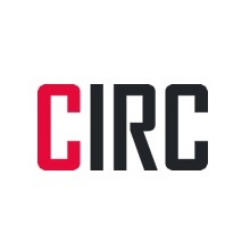Submission Guidelines for Authors
The journal Anales del Instituto de Investigaciones Estéticas of the Universidad Nacional Autónoma de México is a biannual publication, specialized in theory and history of art and esthetics and open to all related disciplines. It includes research papers, critical analyses of documentary testimonies, reports on works of art, news items, biographical sketches, and reviews of publications within the field of artistic production in all its manifestations.
I. Requirements for the submission of manuscripts
1.Contributions must be original and unpublished, as well as relevant to their discipline. Texts should be submitted to anliie@unam.mx.
2. Once the receipt of the text is confirmed, it will be submitted to the iThenticate tool for detecting similarities and matches.
3. After a positive evaluation by the system, the journal's editors will determine the thematic relevance of the text according to the journal's editorial focus.
4. Texts in Spanish, English, French, and Portuguese are accepted. Authors wishing to submit a text in another language should contact the editors.
5. The Word file must be double-spaced, with three-centimeter margins, and it must be the final version of the text. The length should range between 9,000 and 12,000 words for all articles; critical analyses of documentary testimonies and reports on artistic works should range from 2,500 to 6,250 words; biographies and reviews should range from 7,50 to 2,500 words.
6. The first page must include the title and subtitle of the article in both English and Spanish, the author's name, affiliation, email, ORCID, research lines (in both Spanish and English), and the most relevant publication. It should also include an abstract in both Spanish and English, summarizing the content of the article with a maximum of 140 words, as well as 5 to 7 keywords for content identification.
7. The author's name and affiliation must appear at the beginning of the text. All divisions or sections should be indicated with left-aligned headings, separated from the text by one line before and one after. Quotations longer than five lines should be transcribed in a separate paragraph, without altering the general line spacing, and in a smaller font size. Footnotes should be numbered consecutively with superscript Arabic numerals and placed after punctuation marks.
II. Critical apparatus
1. The critical apparatus (set of citations, references and footnotes that give academic rigor to the text) must follow the guidelines established by The Chicago Manual of Style, whose “Quick Guide” can be consulted at:
http://www.chicagomanualofstyle.org/tools_citationguide.html
2. Bibliographical references must include: author (received name and surname in upper and lower case), Title of the Book (place: publisher, year), pages cited; for example: Ernst Hans Gombrich, Arte e ilusión. Estudio sobre la psicología de la representación pictórica, tr. Gabriel Ferrater (Madrid: Debate, 1998), 286.
3. In the case of works by more than one author, all of them must be mentioned, if more than seven, et al. will follow.
4. When citing a particular chapter of a book: author, “chapter title”, in author, Title of Book (place, publisher, year), pages cited; for example: Jorge Sebastián Lozano, “Veritas Filia tempori: Gombrich y la tradición”, in Paula Lizárraga, ed., E.H. Gombrich, in memoriam (Pamplona: EUNSA, 2003), 387-406.
5. References to printed journals should include: author, “Title of Article”, Name of Publication (respecting capitals) number of volume, part number (date of publication): pages cited; for example: Francisco Egaña Casariego, “Joaquín Vaquero Palacios en Nueva York”, Archivo Español de Arte 86, no. 343 (2003): 237-262. In the case of a newspaper: Author, “Title of the Article”, name of periodical, volume, number, section, date, year, page; for example, Teresa del Conde, “Naturaleza herida: González Serrano”, La Jornada, vol. 54, no. 24, sect. Opinión, August 20, 2013, 12.
6. References to documents in archives are presented in the following manner: Complete name of the archive when citing for the first time and (in brackets) the abbreviation that will be used thereafter; Internal classification or location of the document issuer, issuer, "title of document", date and the folios consulted, for example: Archivo del Cabildo Catedral Metropolitano de México (ACCMM), Actas de cabildo, Ordo, "Diario manual de lo que en esta Santa Iglesia Catedral Metropolitana de México se practica y observa", 1751, lib. 2.
7. Websites are cited as follows: author’s name, “title”, direct link to the text (“consulted” and the date); example: Rocío Robles Tardío, “La metáfora y la huella del ferrocarril en la formulación de la vivienda moderna en Le Corbusier”, www.dialnet.uniroja.es/servlet/ejemplar?codigo=339925 (consulted October 30, 2013).
8. For film references: director, Title of the film (place: production company, year), duration; example: Federico Fellini, La dolce vita (Roma/París: Riana Film/Pathé Consortium Cinéma, 1960), 174 min.
9. References to sound recordings are formulated as follows: name of composer, Title, director, recording company, year; for example: Silvestre Revueltas, Tragedia en forma de rábano (no es plagio), Enrique Diemecke, Gramophone, 1990.
III. Illustrations
- A maximum of 12 images will be sent when it is an article, and 6 when it is a work or document.
- A Wordfile will be sent as reference with the images and their corresponding captions numbered in the order in which they appear in the text, accompanied by the duly completed “Form for the submission of images”. It is important to make sure that the images fulfill the general requirements, such as: clarity, definition, good framing, so as to ensure an acceptable quality of reproduction.
- Images must fulfill the following requirements: a) photographs and midtones: 300 dpi, in .tif format and 14 cm breadth; b) line drawings (maps, sketches, diagrams: 1200 dpi, in .tif format and 14 cm breadth. They must be submitted via email, Dropbox, or WeTransfer, in which case the files need to be numbered according to their captions, and should be accompanied by a Word document with the images embedded and their corresponding captions.
- Digitalized reproductions from books or journals are not accepted.
- Captions: the numeration must be in accordance with the names of the submitted files, followed by: author, title of the work, date, dimensions, place. Source or collection. Photographic credit © or details of the holder of the ownership rights over the image for publication on paper or in electronic form.
- Reproduction rights: the author must remit licenses in writing, for both printed and on-line editions, permitting reproduction of those illustrations that require such authorization. Only where inter-institutional agreements exist between this Institute and other institutions involved may the permits be sought by the legal area of the Publications Department.
IV. Peer-review Process
- Once reception of the text has been confirmed, the work will be submitted to a process of pre-selection by the editors of the journal so as to determine its thematic suitability. Once the work has been rated as relevant for publication it will be submitted for anonymous peer review; in the case of research articles, documentary analysis, and studies of works of art, opinions will be sought from two specialists in the field; biographical sketches and reviews will be submitted to a single referee.
- Referees shall be external to the journal’s editorial team and shall have no relationship with the author. They must have studies of master’s or doctorate level and have published at least one article of research, reflection or critical review related to the subject of the manuscript. They will be provided with an assessment form with which to express their opinion on the quality of the originals received.
- Whatever the nature of the results, the contents of referees’ opinions will be delivered to the authors. At all times the anonymity of both authors and evaluators will be respected.
- The editors of the journal shall be empowered to request modifications to—or to reject—the contribution in attendance upon referees’ determinations. Decisions may take the form: a) accepted without changes; b) accepted with suggestions for changes; c) accepted on the condition of carrying out the changes indicated; or d) rejected.
- When attending to suggestions or conditions, the author shall highlight the changes made to his/her text. The editors will then review the modifications introduced by the author in relation to the suggestions or conditions made by referees, before proceeding—assuming that the suggestions or conditions have been fulfilled—to accept the work..
- The Universidad Nacional Autónoma de México requires authors to transmit intellectual ownership rights to the journal Anales del Instituto de Investigaciones Estéticas for the effects of publishing the article and accompanying material both on paper and by electronic or any other technological media, for exclusively scientific or cultural and non-commercial purposes. Authors must therefore send back the duly completed and signed form for transmission of author’s rights. This form will be sent by mail or e-mail in a PDF format during the process of galley proof revision.
- Once the text has been approved and all previously indicated requirements have been met, the complementary material (images and reproduction licenses) will be checked. It is an obligation of the authors to resubmit any material that does not meet the quality requirement for printing.
- If necessary, the editors may, subject to authors’ agreement, request modifications in order to respect editorial design criteria.
- Authors must undertake to check both galleys (in order to give their approval of the copy editing) and final page proofs (so as to corroborate that the sequence of images is correct and corresponds with the captions). In neither case will major modifications to the text be accepted.
V. Editorial process
- Once the work has been rated as relevant for publication it will be checked using a plagiarism detection software: iThenticate.The work will be submitted to a process of pre-selection by the editors of the journal so as to determine its thematic suitability. It will subsequently be submitted for anonymous peer review; in the case of research articles, documentary analysis, and studies of works of art, opinions will be sought from two specialists in the field; biographical sketches and reviews will be submitted to a single referee.
- Referees shall be external to the journal’s editorial team and shall have no relationship with the author. They must have studies of master’s or doctorate level and have published at least one article of research, reflection or critical review related to the subject of the manuscript. They will be provided with an assessment form with which to express their opinion on the quality of the originals received.
- Whatever the nature of the results, the contents of referees’ opinions will be delivered to the authors. At all times the anonymity of both authors and evaluators will be respected.
- The editors of the journal shall be empowered to request modifications to—or to reject—the contribution in attendance upon referees’ determinations. Decisions may take the form: a) accepted without changes; b) accepted with suggestions for changes; c) accepted on the condition of carrying out the changes indicated; or d) rejected.
- When attending to suggestions or conditions, the author shall highlight the changes made to his/her text. The editors will then review the modifications introduced by the author in relation to the suggestions or conditions made by referees, before proceeding—assuming that the suggestions or conditions have been fulfilled—to accept the work.
- The Universidad Nacional Autónoma de México requires authors to transmit intellectual ownership rights to the journal Anales del Instituto de Investigaciones Estéticas for the effects of publishing the article and accompanying material both on paper and by electronic or any other technological media, for exclusively scientific or cultural and non-commercial purposes. Authors must therefore send back the duly completed and signed form for transmission of author’s rights. This form will be sent by mail or e-mail in a PDF format during the process of galley proof revision.
- Once the article is in the process of reviewing the first proofs, the Universidad NAcional Autónoma de México will request that the authors sign a copyright transfer form so that the journal can edit, publish, and disseminate their article in print, electronic media, or any other technology, according to a protocol for scientific and cultural purposes without profit
- Once the text has been approved and all previously indicated requirements have been met, the complementary material (images and reproduction licenses) will be checked. It is an obligation of the authors to resubmit any material that does not meet the quality requirement for printing.
- If necessary, the editors may, subject to authors’ agreement, request modifications in order to respect editorial design criteria.
- Authors must undertake to check both first proofs (in order to give their approval of the copy editing so as to corroborate that the sequence of images is correct and corresponds with the captions) and final page proofs. In neither case will major modifications to the text be accepted.
VI. Ethical Norms of publication
The journal Anales del Instituto de Investigaciones Estéticas ensures that all parties (editors, reviewers, and authors) adhere to ethical standards throughout the publication process. Anales del IIE follows ethical guidelines based on international standards, which are:
Editors
- Commit to ensuring the anonymity of authors and reviewers during the editorial process.
- Ensure that all texts are reviewed by experts in the relevant field and guarantee that the editorial process is carried out transparently.
- Uphold academic freedom and objectivity, performing their duties with effectiveness and quality.
- In case of doubt, consult the editorial board of the journal.
Reviewers
- Ensure that the texts are original and report any possibility of plagiarism.
- Carefully review the submitted text within the established deadlines and decline if the work falls outside their area of expertise.
- Commit to not disclosing or using the content of an article that has not yet been published. A violation of this ethical requirement will be sanctioned.
- Must be fair and impartial, evaluating the work based on strictly academic criteria.
Authors
- Affirm that their research work is original and unpublished, meaning it has not appeared in any other printed or digital medium nor has it been simultaneously submitted to another publishing body. Articles that have already been published cannot be submitted.
- Must justify the relevance of translating a previously published text into Spanish. Based on this, the editors, assisted by the editorial board, will decide on its publication.
- Must avoid unjustified authorship, which involves including individuals as authors whose contributions to the text were minimal or nonexistent.
- Commit to giving credit to the individuals and institutions that have supported them at any stage of the process.
VII. Editorial Ethics Policy
All texts will be subject to analysis for information matches and plagiarism. These ethical violations will be penalized depending on their severity. In the case of verified plagiarism, an ethics committee composed of peers will be formed to investigate the allegations and recommend appropriate sanctions. If plagiarism is confirmed, the article will be withdrawn from the journal, and a statement will be published explaining the reasons for its removal.
